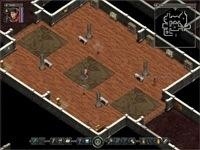If I give up waiting for the iPhone to come to Verizon (or Spring or T-Mobile), I could, at least in theory, use a femtocells to overcome the crappy AT&T wireless reception at my house. In fact, AT&T will sell me one for around US$150. Maybe they should just give me one.
AT&T says it’s rolling out femtocells that, when connected to the home’s broadband modem, will pick up signals from the cell phones in the home and relay them through the Internet connection. In essence, they’re small cell towers for the home. Dallas-based AT&T is introducing the 3G MicroCell in mid-April in some markets, which haven’t been announced. The rest of the country will follow over the next several months.
But if AT&T can’t offer good wireless service in my area, why shouldn’t they just give me one? Especially if I enter into a long-term iPhone contract.
— Dennis Sellers
What’s more, a femtocell in my house could be good for other folks, too. As Stephen Shankland points out in a “CNET” article (http://news.cnet.com/8301-30685_3-20001242-264.html), the devices could be one solution to overcoming some of the mobile phone congestion problems.
“The carriers should be encouraging your neighbors to use your femtocell. Again, it’s all the more network capacity they don’t have to route through the cell towers. And if the carriers were paying for the femtocell in your home, you wouldn’t feel so proprietary about sharing the network,” he says. “Granted, it’s your broadband connection they’d be degrading by playing Farmville on their iPhones. But again, if your carrier is buying you a femtocell, you’d probably be coming out ahead.”
He notes that carriers can’t just give out femtocells willly nilly. They might only go to people who pay for new phones with unlimited data plans, or to those in heavy-traffic areas where dropped calls are a problem. Of course, there are problems to overcome.
“Regulatory matters might intrude, particularly where radio-frequency interference is an ongoing issue,” Shankland says. “Femtocells stop working when the power goes out. Upgrades to 4G would incur new expenses. And the complicated system of handing off a phone connection from one cell tower to another when people are on the move gets even more complicated with femtocells.”
But I think the potential outweighs the problems. So, AT&T, when can I expect my new femtocell?
By the way, a femtocell is a small cellular base station. The small boxes beam low-power wireless signals to cell phones and relay signals back to the carrier through the subscriber’s high-speed Internet connection. The femtocell incorporates the functionality of a typical base station but extends it to allow a simpler, self contained deployment. Basically, they”re miniature cellular towers for the home.
By 2012, there will be more than 150 million users of femtocell products on 70 million access points worldwide, according to ABI Research. By letting users bypass wireless towers when making a call, femtocells can purportedly boost a wireless network’s capacity by up to 1,500 times.



